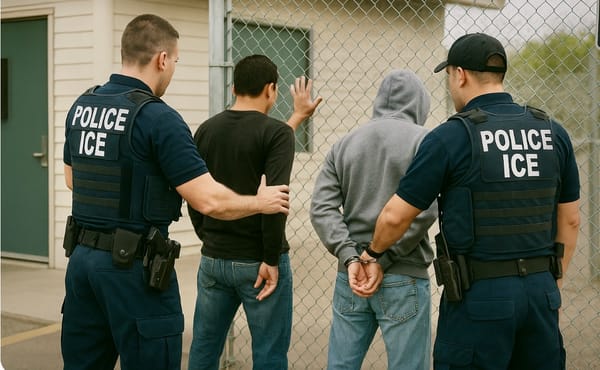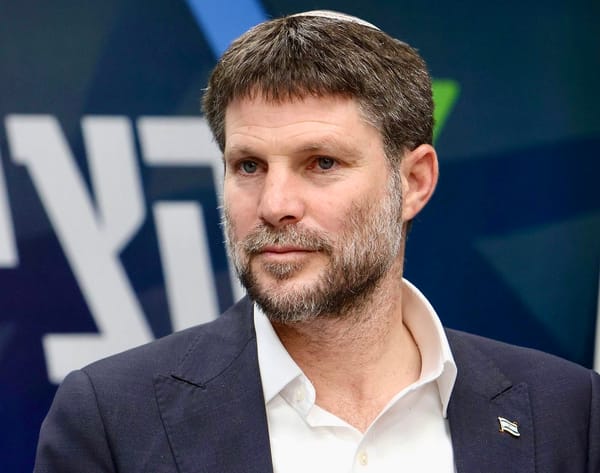D-Day: Finding a hero to visit
Sometimes you get it right the first time. This tribute to the heroes of D-Day first appeared May 31, 2019.
—-
The French town of Bayeux, four miles from the English Channel, was the first one liberated after D-Day, when the Allies launched the greatest armada that ever was, or ever will be.
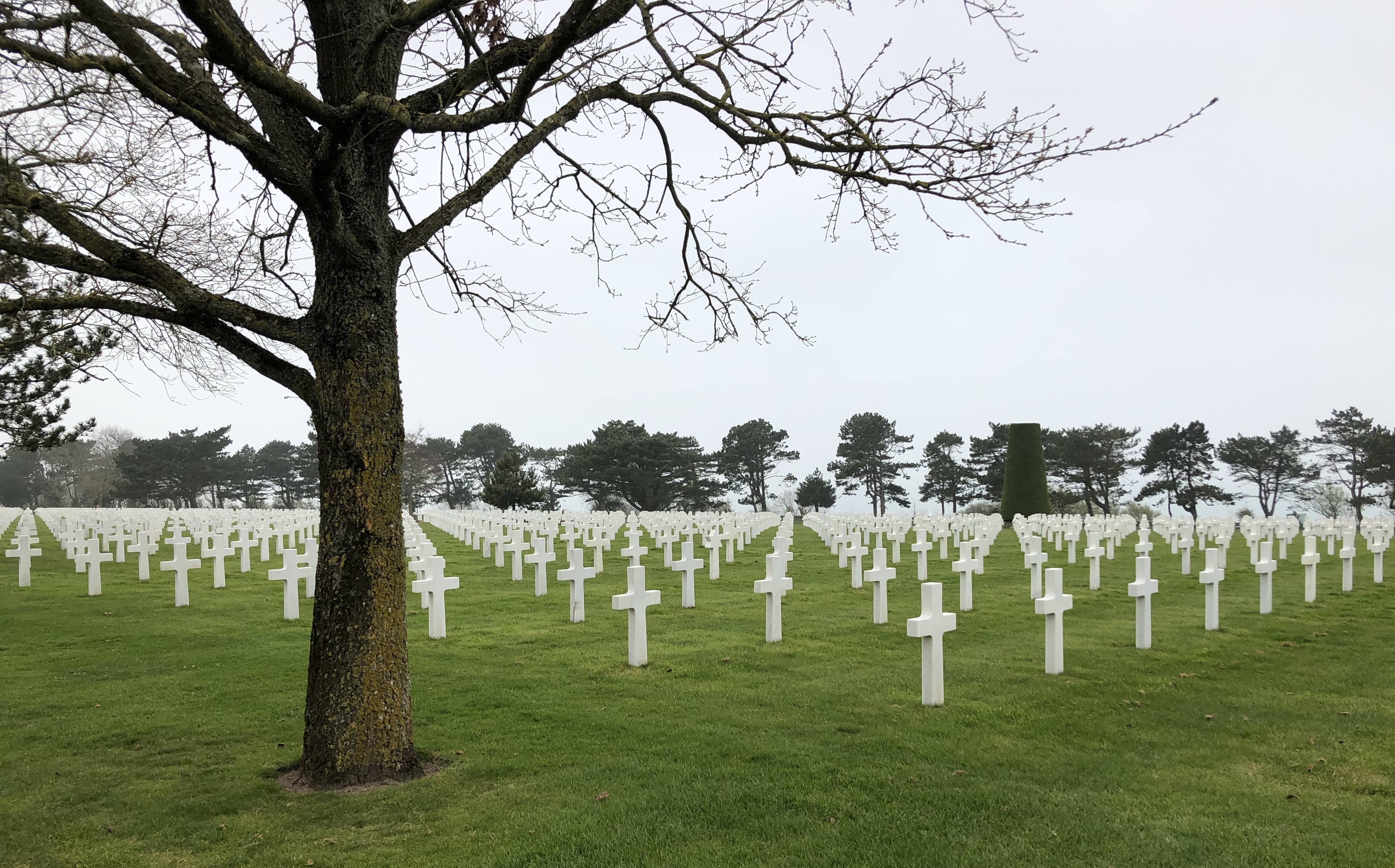
At nearby Omaha Beach, I stood on a bluff looking over the gray Channel toward England, where U.S., British, and Canadian troops came from on June 6, 1944. At my back was the 172-acre Normandy American Cemetery and Memorial, the resting place of 9,380 Americans who never returned home.
I came here to thank them. My freedom is a gift they purchased with their lives.
Our base in Bayeux was the 46-room Churchill Hotel, a three-star hotel with a 1940’s feel, but which was built in 1986. A town of 13,000, Bayeux began as a settlement at the fringes of the Roman Empire. It was conquered many times over the centuries, notably by Vikings and finally by the Nazis, who were driven out by British troops on June 7.
Before arriving in Normandy, I paid another thank-you — to my girlfriend, known as Half-Pint. After a stumble and fall that ruptured my quadriceps, she nursed me through two surgeries that left me immobile and helpless for long periods.
When I was finally able to walk on a cane, I asked how I could thank her, and she said Paris. We spent three days sightseeing there, then piled into a rented Opel and set our Waze for the coast.
Escaping Paris traffic was a minor nightmare, but with Half-Pint navigating, we soon were on lightly trafficked highways with toll booths that took credit cards. In less than three hours, we were in peaceful Bayeux.
Seventy-five years ago, this picturesque area was awaiting the Allies, as were the Germans. Everyone knew an invasion was imminent, but no one knew where — few thought it would be Normandy — and no one knew when.
If you’re interested in a battlefield tour, you’ll need a guide, because the five invasion beaches stretch over 50 miles of coastal plain. Based mostly on rave reviews online, I chose Allan Bryson’s First Normandy company to tour the American battlefields. Bryson, a military historian, takes up to four people in his Renault Espace for a flat charge of 585 euros (about $650) for a daylong tour, and his many anecdotes enliven the factual narrative.
He has a deep affection for veterans and became friendly with many of them, including Philadelphians “Babe” Heffron and “Wild Bill” Guarnere of Band of Brothers fame.
In addition to the beaches, Normandy is dotted with such points of interest as Sainte-Mere-Eglise, the first town liberated by Americans, after a wave of paratroopers floating into the town square was decimated by waiting Germans.
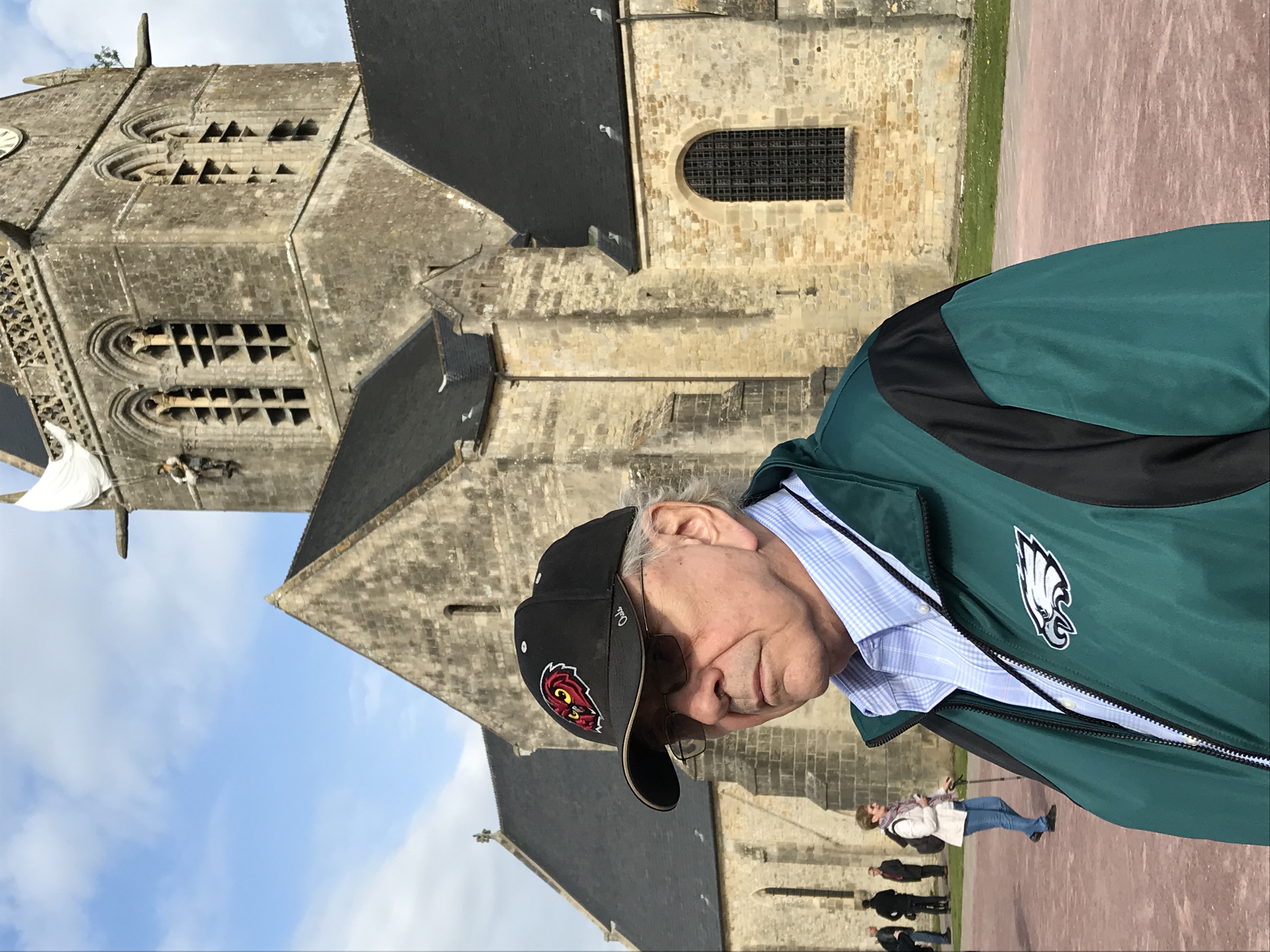
I stood in the square under the effigy of John Steele, whose parachute caught on the church roof and suspended him over the scene of his buddies being slaughtered below. There is a statue of another paratrooper on the roof of a small building facing the square. How Sainte-Mere-Eglise reveres its long-ago liberators brought tears to my eyes.
The Allies brought ashore 156,000 troops the first day. The Americans’ Omaha Beach was the bloodiest, with at least 2,400 dead, wounded, or missing.
As we stood on the sea wall on the four miles of Omaha Beach, Bryson explained that movies — 1998’s Saving Private Ryan and 1962’s The Longest Day, for example — portrayed the landing wrong. Troops didn’t hit the beach — they jumped off the landing crafts 500 yards out, at low tide, so they could destroy exposed underwater obstacles. One German bunker remains, but there’s not much else to see.
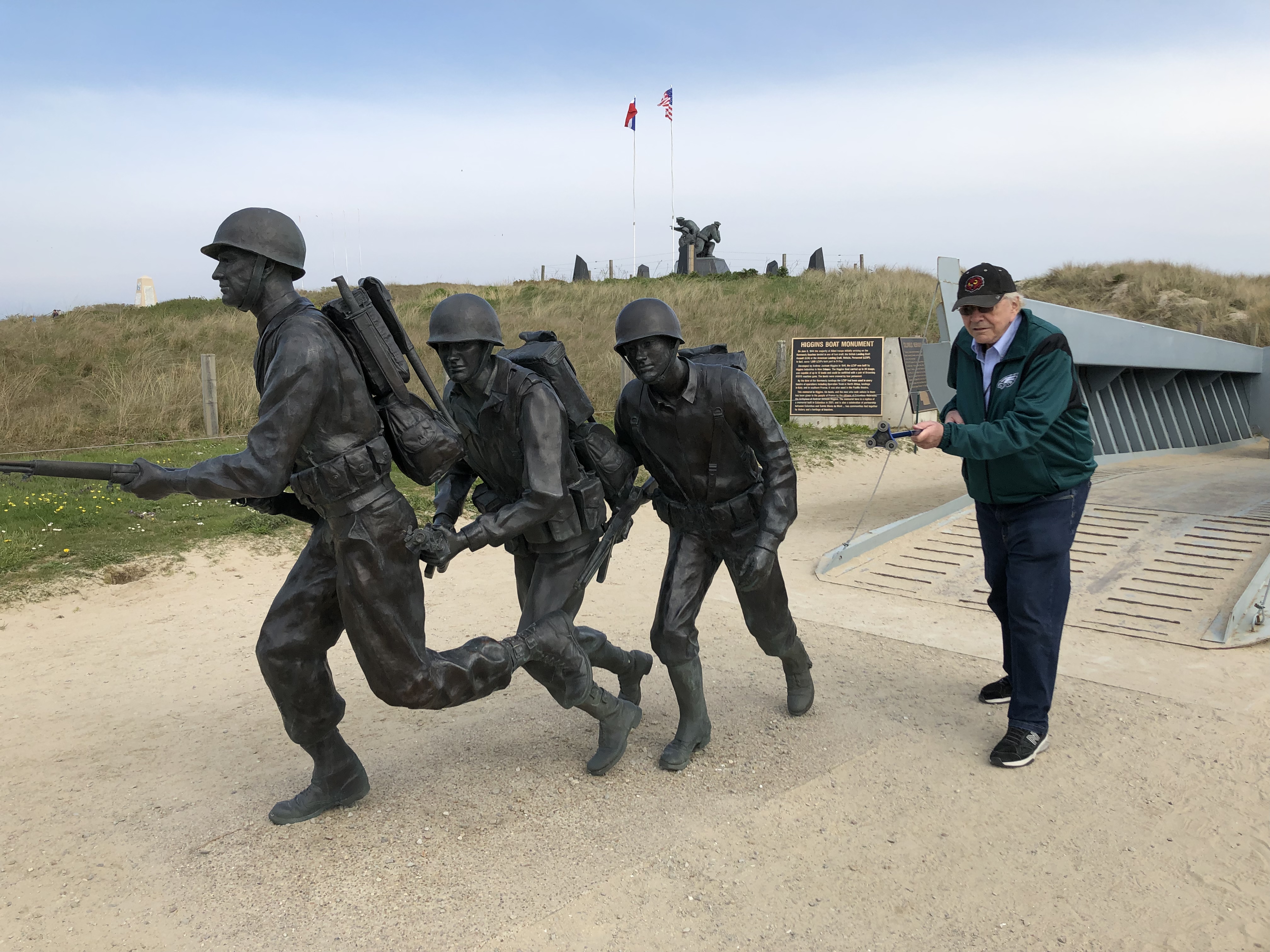
At Utah, the Americans’ adjoining beach, a providential current blew landing craft from the assigned attack point to a poorly defended area. There, we parked and walked, watching families picnicking on the six-mile-long beach. At its entrance, there’s a dramatic sculpture of three U.S. soldiers charging ashore from a Higgins landing craft.
In contrast to the Omaha slaughter, at Utah everything went right — the naval bombardment and air attacks neutralized the Germans’ bunkers and heavy weapons. Only 114 lives were lost on Utah the first day. Survival was so much a matter of chance.
The other three beaches — Sword, Gold, Juno — were assaulted by the British and Canadians, who suffered far fewer casualties than the Americans at Omaha.
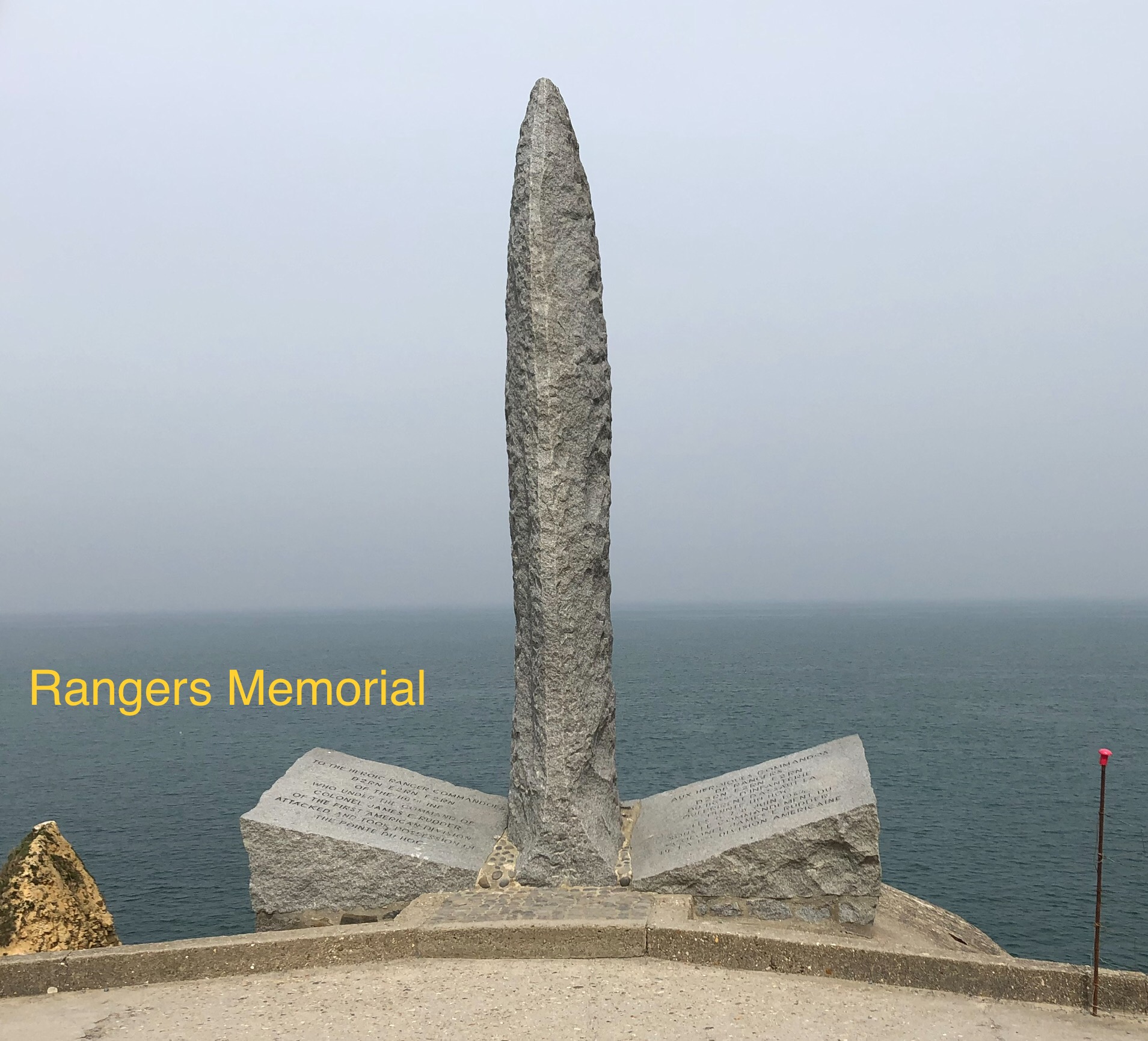
We stopped at Pointe du Hoc, where 225 American Rangers scaled 100-foot cliffs under German fire, miraculously suffering only 15 dead during the assault. We walked among the broken bunkers, skirting large pits created by naval shelling. Unlike the beaches, this looked like a battleground.
The American toll was 4,649 casualties among the 57,500 men they put ashore on D-Day, Bryson said.
Both sides knew that everything was riding on the first 24 hours of the invasion. If the Allies breached Hitler’s Atlantic Wall, it was the beginning of the end for the Third Reich. If the Allies were thrown into the sea, it would be years, at least, before they could try again.
Going all-in, the Allies sent 6,483 ships — from landing craft to battleships — 100 miles across the Channel to Normandy, rather than heavily defended Pas de Calais, the closest point to England.
Why Normandy? The element of surprise.
Why so many troops? As British military author Max Hastings wrote in his 1984 book Overlord: D-Day and the Battle for Normandy, the experienced German soldier was more ferocious and skilled than the British Tommy or U.S. Yank.
The Germans had a major defensive advantage in the hedgerows of Normandy, dense tangles of greenery, taller than a man, able to stop a tank. The hedgerows slowed the Allied advance, causing high casualties, but as I looked out the window, I saw that most of them are gone.
Our tour ended, fittingly, at the American military cemetery, the first one on European soil in World War II.
Tragically beautiful, the treetops are flat, sheared off to commemorate lives cut short. The serenity of songbirds and the surf below was occasionally drowned out by the laughter of children too young to understand the hallowed ground. Perhaps those lying here are happy for that joyfulness.
On this overcast weekday, the cemetery was not crowded. Visitors were mostly English-speaking family groups who stayed on the paths but occasionally walked between the impeccable rows of grave markers. Silent Christian crosses and Jewish stars carved of Italian marble carpet the solemn, heartbreaking lawn.
Each marker faces west, toward America. Each tombstone is engraved with only name, rank, military unit, home state, and date of death, without date of birth.
That was decided in World War I.
“It was argued the absence of the date of birth would bring some parity,” cemetery superintendent Scott Desjardins told me in an email. “The cemeteries make no distinction between ranks, gender, creed, awards, etc.”
It is excruciatingly simple.
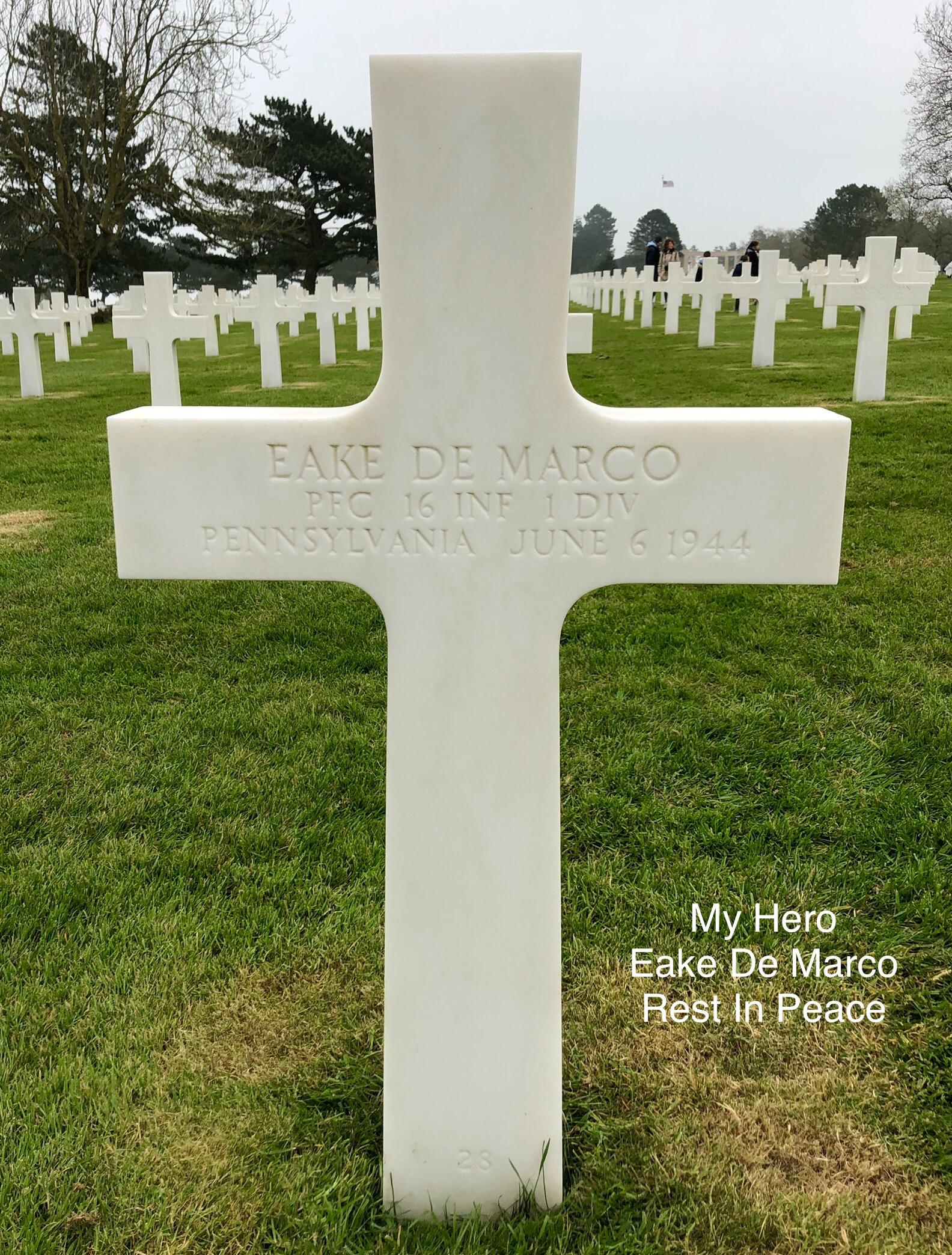
I form a thought of gratitude for all who lie here, but it seems impersonal. I walk the rows of tombstones and find the grave of a Pennsylvanian: Pfc. Eake De Marco, 16th Infantry, 1st Division, died on D-Day.
Standing at his cross, I thank him for what he did for me.
When I told people I would be visiting the Normandy cemetery, many asked whether I knew anyone buried there.
I know Pfc. Eake De Marco.
